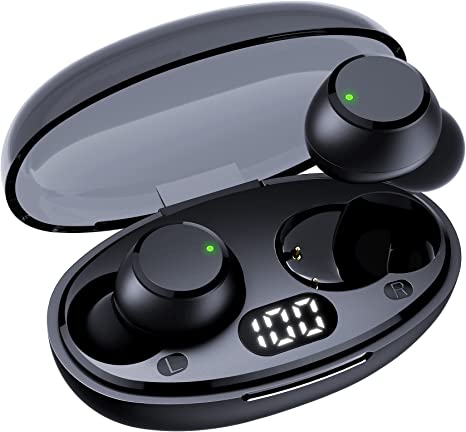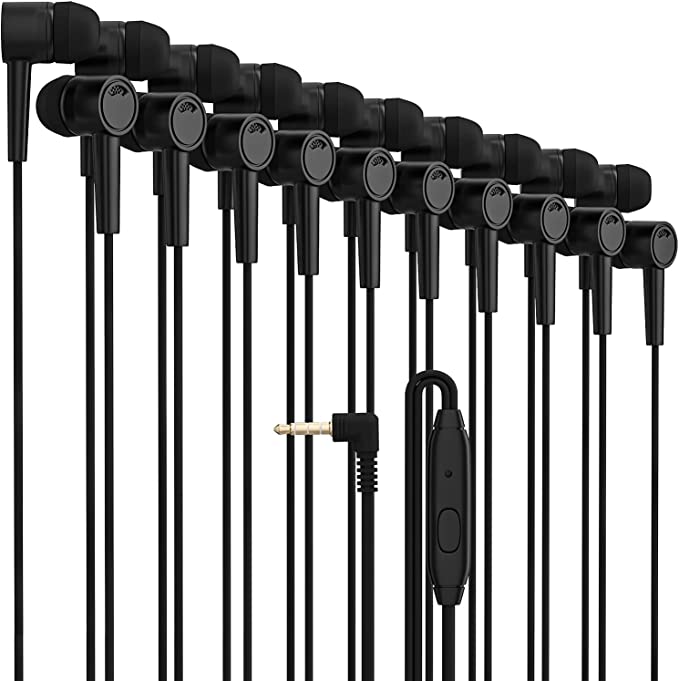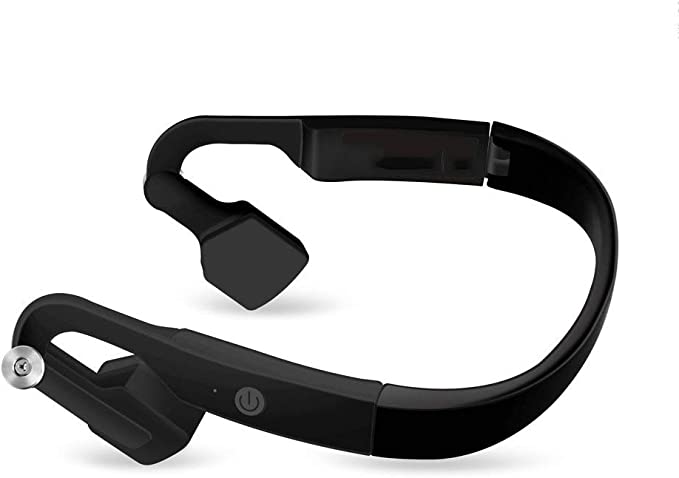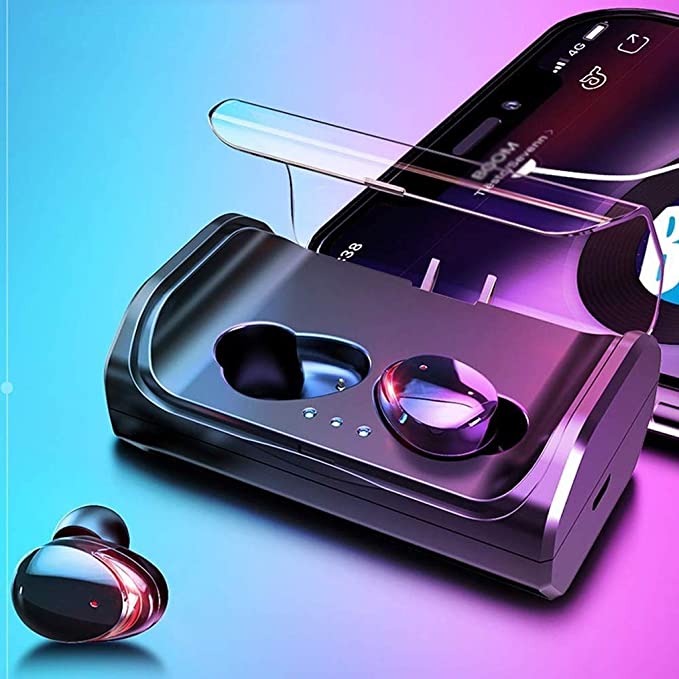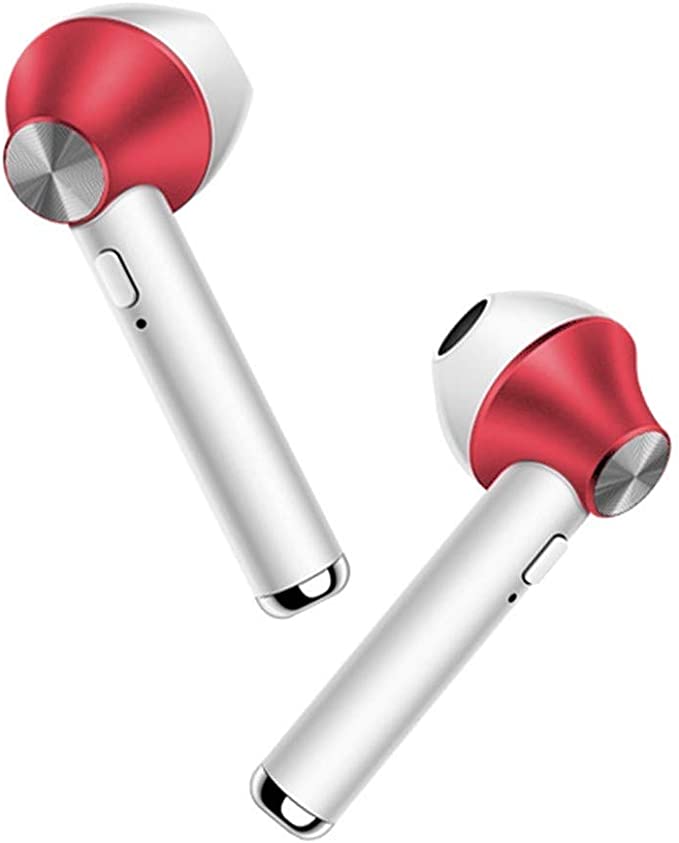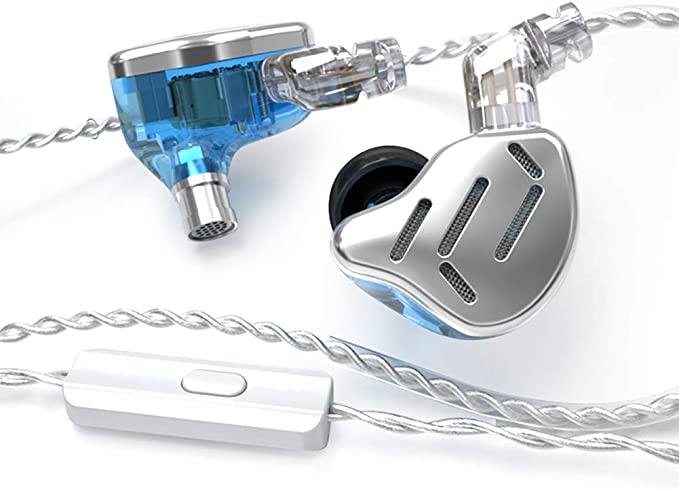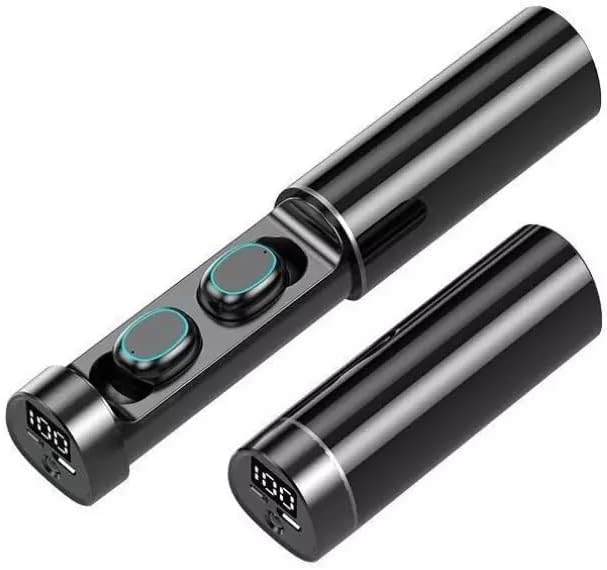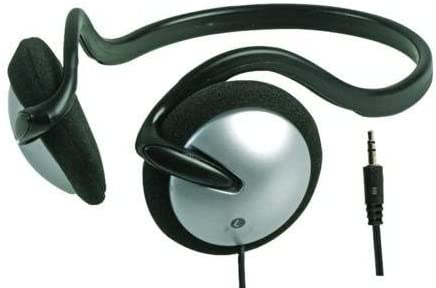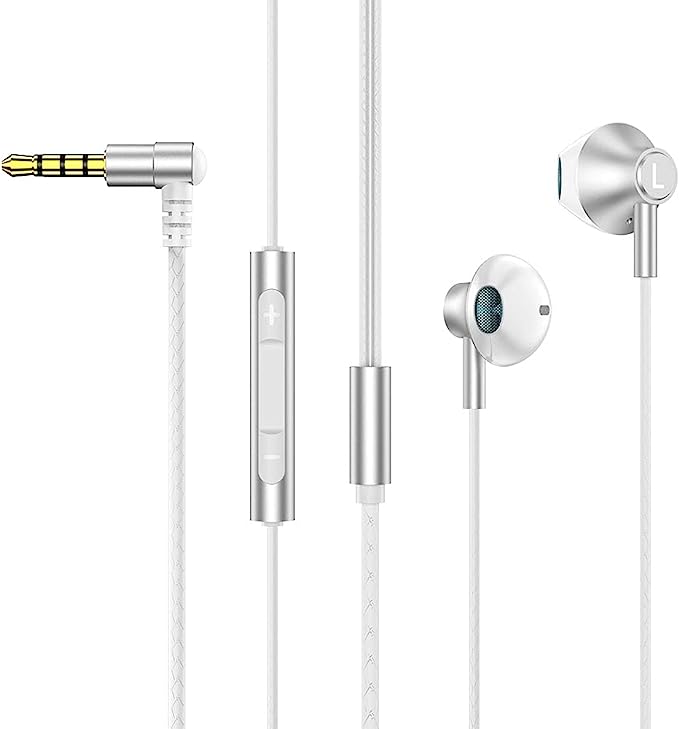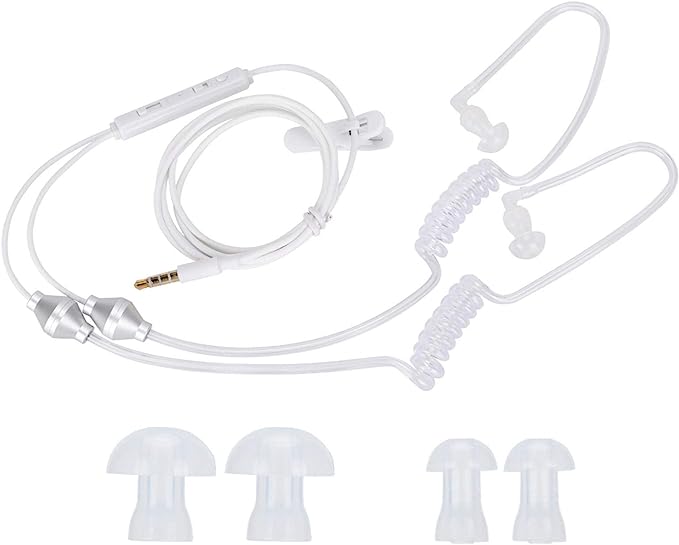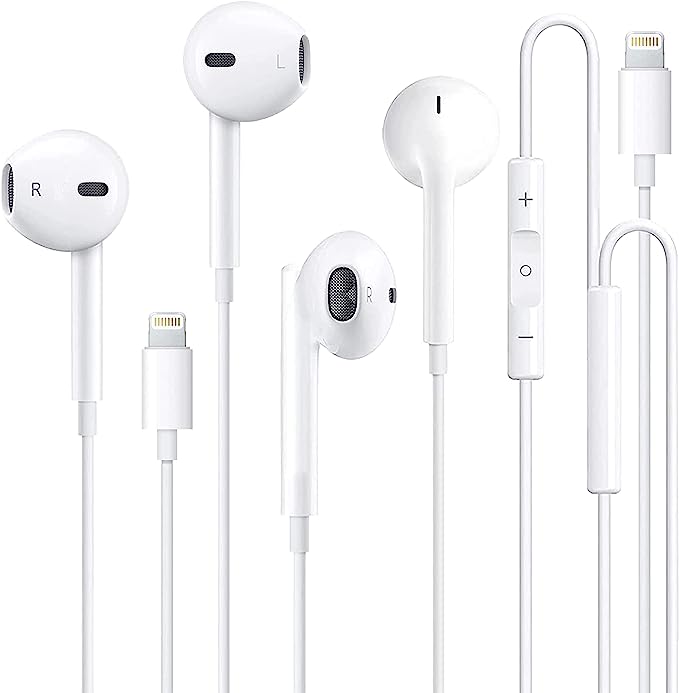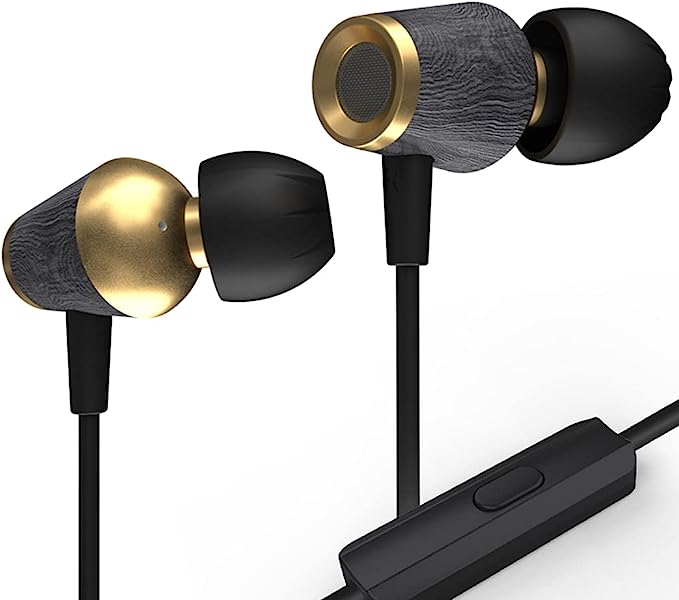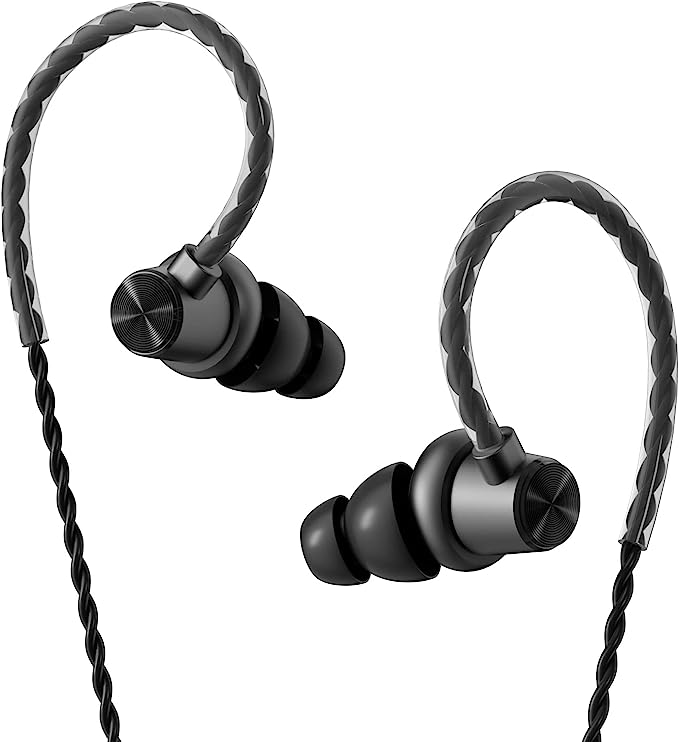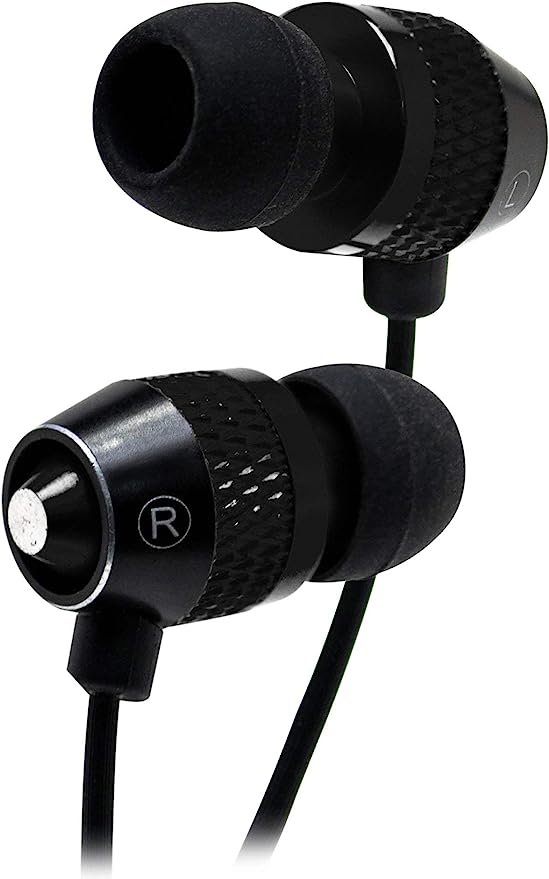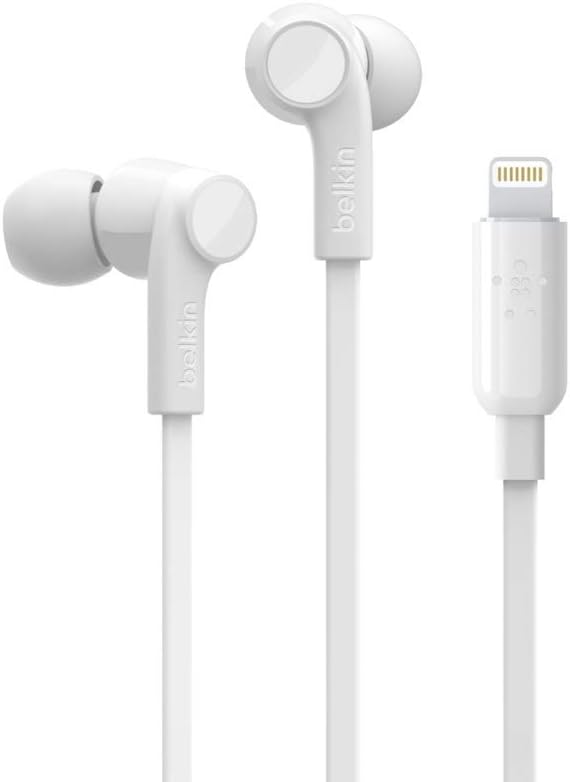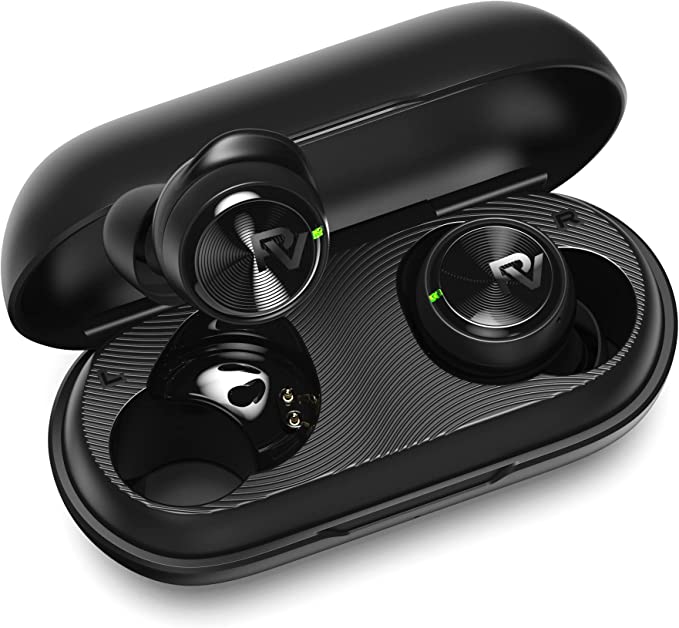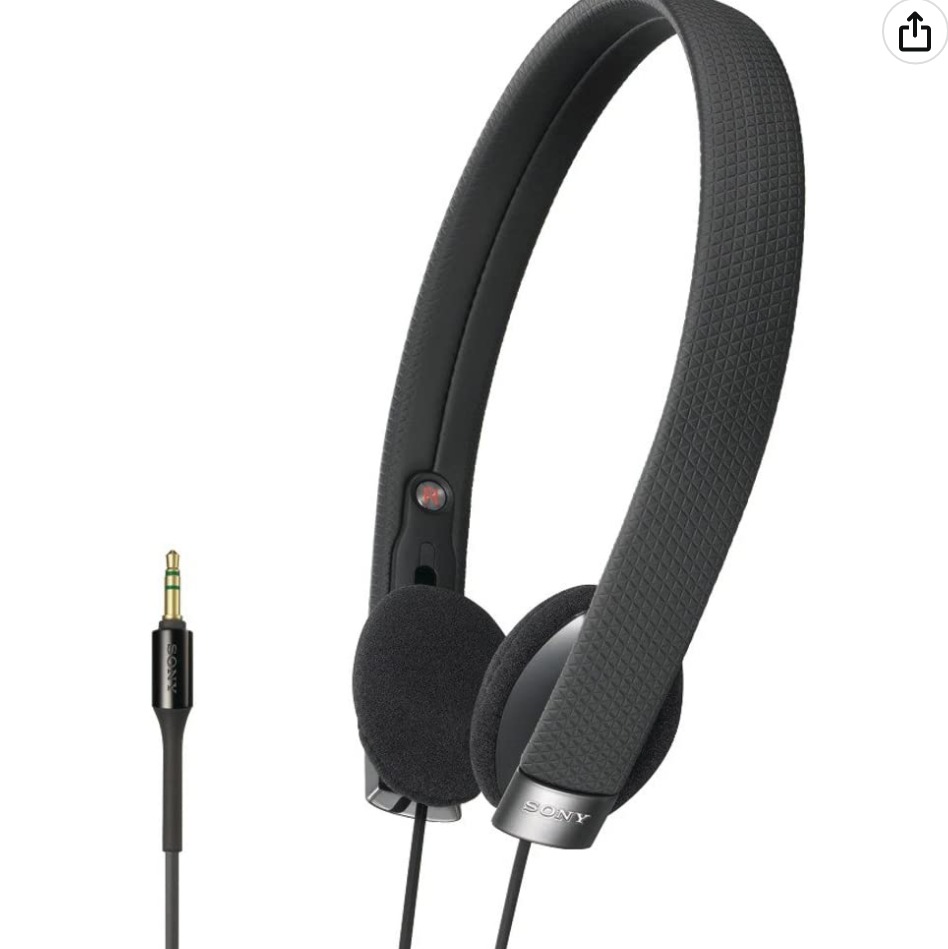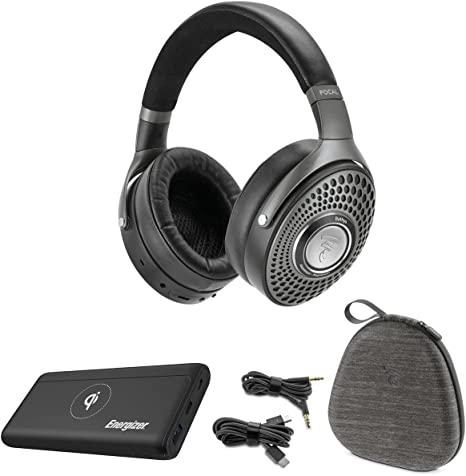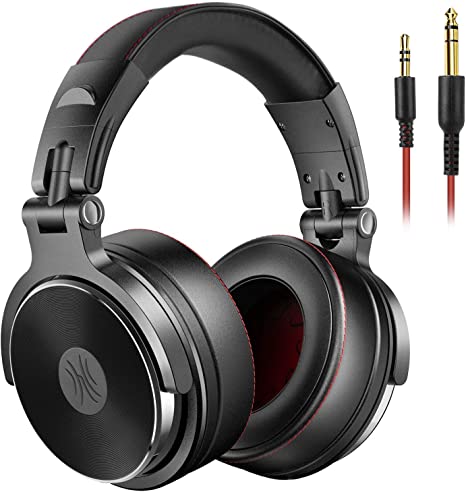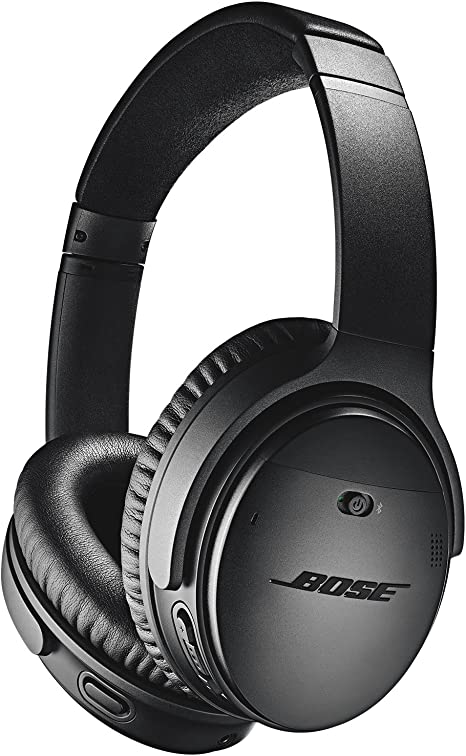PALOVUE NeoFlow Lightning Wired Earphones - Experience Superior Sound & Comfort
Update on March 20, 2025, 10:02 a.m.
Imagine you’re walking down a bustling city street. The rumble of traffic, the chatter of conversations, the chirping of birds – a cacophony of sounds surrounds you. Yet, amidst this chaos, you slip on your earphones, and suddenly, you’re transported. The crisp notes of a guitar solo, the soaring vocals of your favorite singer, the subtle nuances of a podcast – all delivered with clarity and precision. This seemingly simple act, plugging in a pair of earphones, is a testament to decades of scientific innovation and a deep understanding of the physics of sound. Let’s embark on a journey to explore this fascinating world, using the PALOVUE NeoFlow Lightning Wired Earphones as our guide.

The Whispers of the World: Understanding Sound Waves
Before we delve into the intricacies of headphones, let’s grasp the fundamentals. Sound, in its essence, is vibration. When an object vibrates, it creates pressure waves that travel through a medium, like air, to our ears. These waves are characterized by their frequency and amplitude.
Frequency, measured in Hertz (Hz), determines the pitch of a sound. A higher frequency means a higher pitch – think of the high-pitched squeak of a mouse compared to the low rumble of thunder. The human ear can typically perceive frequencies ranging from 20 Hz to 20,000 Hz, although this range can vary with age and individual differences.
Amplitude, on the other hand, determines the loudness of a sound. A larger amplitude corresponds to a greater intensity of the pressure wave, resulting in a louder sound. We measure loudness in decibels (dB).
But sound is rarely a single, pure tone. Most sounds we hear are complex combinations of different frequencies and amplitudes, creating a unique sonic signature called timbre. Timbre is what allows us to distinguish between a violin and a piano playing the same note at the same volume. It’s the “color” of sound, shaped by the intricate interplay of overtones and harmonics.
From Analog to Digital: A Revolution in Audio
For much of the 20th century, audio was recorded and transmitted in analog form. Analog signals are continuous representations of sound waves, mirroring the original vibrations. Think of a vinyl record, where the grooves physically represent the shape of the sound wave. However, analog signals are susceptible to degradation and noise.
The digital revolution transformed audio. Digital audio converts sound waves into a series of discrete numbers (0s and 1s) through a process called sampling. The sampling rate determines how many times per second the sound wave is measured, while the bit depth determines the precision of each measurement. Higher sampling rates and bit depths result in a more accurate representation of the original sound, capturing more detail and nuance. Common digital audio formats include MP3, AAC, and FLAC, each employing different compression techniques to balance file size and audio quality.
The Lightning Advantage: Connecting with Clarity
The PALOVUE NeoFlow earphones utilize Apple’s Lightning connector, a digital interface designed specifically for iOS devices. This offers several key advantages over the traditional 3.5mm headphone jack, which is an analog interface.
The 3.5mm jack relies on the device (your iPhone, for example) to convert the digital audio signal into an analog signal using a built-in Digital-to-Analog Converter (DAC). The quality of this DAC can vary significantly between devices, impacting the final sound quality.
The Lightning connector, however, transmits the digital audio signal directly to the earphones. This means the DAC is located within the earphone assembly or the Lightning connector itself. This is a crucial distinction. While a DAC is always necessary to convert the digital signal to analog for the headphones’ speakers to work, the Lightning connector allows for better control over the quality of that conversion. PALOVUE can choose a high-quality DAC specifically optimized for the NeoFlow earphones, ensuring a more accurate and consistent audio experience.
It’s important to note that while the Lightning connection transmits a digital signal, it doesn’t guarantee lossless audio. Lossless audio refers to formats like ALAC or FLAC where no audio data is lost during compression. Many common formats, like AAC (which Apple uses extensively), are lossy, meaning some data is discarded to reduce file size. However, even with lossy formats, the direct digital connection provided by Lightning minimizes potential signal degradation compared to an analog connection.
Introducing the PALOVUE NeoFlow: A Symphony of Technology
The PALOVUE NeoFlow Lightning Wired Earphones are designed to take full advantage of the digital audio capabilities of your iPhone. They’re not just about plugging in and listening; they represent a careful integration of several key technologies:
- Direct Digital Connection: As we’ve discussed, the Lightning connector ensures a clean, digital signal path from your device to the earphones.
- Integrated DAC: A high-quality DAC within the earphone assembly or connector ensures accurate digital-to-analog conversion.
- Optimized for iOS: The NeoFlow is specially designed and tuned for iOS Devices.

MFi Certification: Apple’s Seal of Approval
The “MFi” in MFi Certified stands for “Made for iPhone/iPad/iPod.” This certification program, administered by Apple, ensures that accessories meet specific performance and compatibility standards. For headphones like the NeoFlow, MFi certification means:
- Guaranteed Compatibility: The earphones are guaranteed to work seamlessly with your Apple devices, avoiding those frustrating “accessory not supported” messages.
- Reliable Performance: The earphones have undergone rigorous testing to ensure they meet Apple’s performance standards for audio quality, power consumption, and functionality.
- Controller Functionality: The built-in three-button controller (allowing you to adjust volume, play/pause music, and activate Siri) is guaranteed to work correctly.

Titanium’s Resonance: The Heart of the NeoFlow
At the core of any earphone is the driver, the component that converts electrical signals into sound waves. The NeoFlow utilizes 13.6mm dynamic drivers with diaphragms made from titanium. Let’s break down why this matters:
- Dynamic Drivers: These drivers work on the principle of electromagnetic induction. A voice coil, attached to the diaphragm, is suspended within a magnetic field. When an electrical signal passes through the coil, it creates a varying magnetic force, causing the diaphragm to vibrate and produce sound waves.
- 13.6mm Diameter: The larger diameter of the driver allows it to move more air, resulting in a more powerful and impactful bass response.
-
Titanium Diaphragm: This is where the NeoFlow truly shines. Titanium is a remarkable material, prized for its exceptional strength-to-weight ratio and stiffness. These properties translate to significant acoustic benefits:
-
High Young’s Modulus: Young’s Modulus measures a material’s stiffness – its resistance to deformation under stress. Titanium has a high Young’s Modulus, meaning it’s very stiff. This allows the diaphragm to move rapidly and precisely, responding accurately to the audio signal, particularly at higher frequencies. This results in clearer, more detailed treble reproduction, minimizing distortion and ensuring that high notes sound crisp and clean, not muddled or harsh.
-
Low Density: Density refers to a material’s mass per unit volume. Titanium has a relatively low density compared to other metals used in diaphragms, like aluminum. This low density means the diaphragm is lighter, allowing it to accelerate and decelerate more quickly. This improves the transient response – the driver’s ability to react to sudden changes in the audio signal. A fast transient response is crucial for accurately reproducing the attack and decay of musical notes, making percussion instruments sound punchy and preventing sounds from blurring together.
-
Good Internal Damping: Even stiff materials vibrate, and these vibrations can create unwanted resonances that color the sound. Titanium exhibits good internal damping, meaning it dissipates vibrational energy quickly, minimizing these resonances. This contributes to a cleaner, more natural sound signature.
-
In essence, the titanium diaphragm acts like a highly responsive, precisely controlled piston, faithfully translating the electrical signals into sound waves with exceptional accuracy and detail.
Crafted for Comfort: The Ergonomics of Sound
Even the best-sounding earphones are useless if they’re uncomfortable to wear. The PALOVUE NeoFlow addresses this with a thoughtful ergonomic design. The shape of the earphone housing is contoured to fit the natural curves of the ear, and the included EarWings and Eartips provide a customizable fit.
- EarWings: These small, flexible fins tuck into the concha (the outer bowl of the ear), providing a secure and stable fit, especially during physical activity. They prevent the earphones from dislodging, even during vigorous movement.
- Eartips: The NeoFlow comes with multiple sizes of silicone eartips. Choosing the right size is crucial for both comfort and sound quality. A proper seal creates a closed acoustic chamber, maximizing bass response and providing passive noise isolation. This blocks out external sounds, allowing you to focus on your audio without needing to crank up the volume, which is better for your hearing health.
This combination of a contoured housing, EarWings, and customizable eartips ensures a comfortable and secure fit for a wide range of ear shapes and sizes.
The Soundstage in Your Ears: Comparing Headphone Technologies
While the NeoFlow utilizes dynamic drivers with a titanium diaphragm, it’s worth briefly comparing them to other headphone technologies:
- Dynamic Drivers (vs. Balanced Armature): Balanced armature drivers are smaller and often found in in-ear monitors (IEMs) used by musicians. They tend to be very detailed and accurate, particularly in the midrange and treble, but often lack the bass power of dynamic drivers. The NeoFlow’s larger dynamic driver offers a more balanced sound signature, with a richer bass response.
- Dynamic Drivers (vs. Planar Magnetic): Planar magnetic drivers use a thin, flat diaphragm suspended between magnets. They are known for their excellent transient response and low distortion, but they are typically larger, heavier, and more expensive than dynamic drivers.
- Dynamic Drivers (vs. Electrostatic): Electrostatic drivers are very expensive and offer the best sound.
- Wired (vs. Wireless): While wireless earphones offer convenience, they rely on Bluetooth, which typically involves audio compression (even with advanced codecs like aptX and LDAC). The NeoFlow’s wired Lightning connection avoids this compression, preserving the full digital audio signal. However, wireless technology is constantly improving, and the convenience factor is undeniable for many users.
The PALOVUE NeoFlow, with its wired Lightning connection and titanium dynamic drivers, strikes a balance between audio fidelity, portability, and affordability, making it an excellent choice for iPhone users seeking a superior listening experience.
Beyond the Specifications: The Human Element of Listening
While we can objectively measure the physical properties of sound waves and the performance of headphones, the experience of listening is subjective and deeply personal. This is where psychoacoustics comes in – the study of how humans perceive sound.
Our brains don’t simply process sound waves passively; they actively interpret and filter them. Factors like our mood, past experiences, and even our expectations can influence how we perceive sound. For example, a song that evokes a strong emotional memory might sound “better” to us, regardless of its technical fidelity.
The NeoFlow’s emphasis on accurate sound reproduction aims to provide a blank canvas, allowing the listener to experience the music as the artist intended. The comfortable fit and noise isolation further enhance the listening experience by minimizing distractions and allowing for greater immersion.

A Sonic Legacy: A Brief History of Audio Technology.
The pursuit of high-fidelity sound reproduction has a long and fascinating history. From Edison’s phonograph in the late 19th century to the development of stereo sound in the mid-20th century, and the digital revolution of the late 20th and early 21st centuries, each innovation has brought us closer to capturing and reproducing sound with ever-greater accuracy.
The Walkman allowed people to take their music with them.
The evolution of headphones has mirrored this broader technological progress. Early headphones were bulky and often uncomfortable, primarily used for professional applications. The development of smaller, more efficient drivers and improved materials led to the portable headphones we know and love today. The rise of digital music and mobile devices further fueled the demand for high-quality, convenient audio solutions.
The Future of Sound : Where do we go from here?
The future of audio technology is likely to be characterized by several key trends:
- Wireless Hi-Res Audio: Advances in Bluetooth codecs and other wireless technologies are pushing the boundaries of wireless audio quality, aiming to rival the fidelity of wired connections.
- Personalized Audio: Technologies that tailor the sound to an individual’s unique hearing profile are becoming increasingly sophisticated.
- Spatial Audio: Creating immersive, three-dimensional soundscapes that mimic real-world listening experiences.
- Active Noise Cancellation (ANC): While the NeoFlow relies on passive noise isolation, ANC technology, which uses microphones and electronic processing to cancel out external noise, is becoming increasingly common and effective.
- Sustainable Materials: Using recycled materials in production.
Caring for your PALOVUE NeoFlow
To ensure the longevity of your PALOVUE NeoFlow earphones, follow these simple care tips: * Keep them clean. * Store Properly. * Avoid Extreme. * Handle with care.
